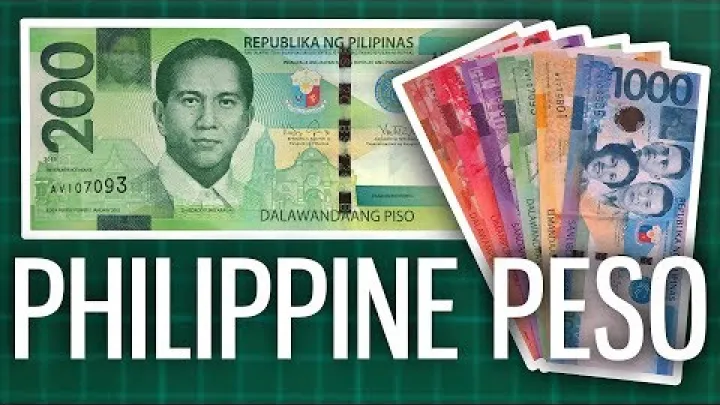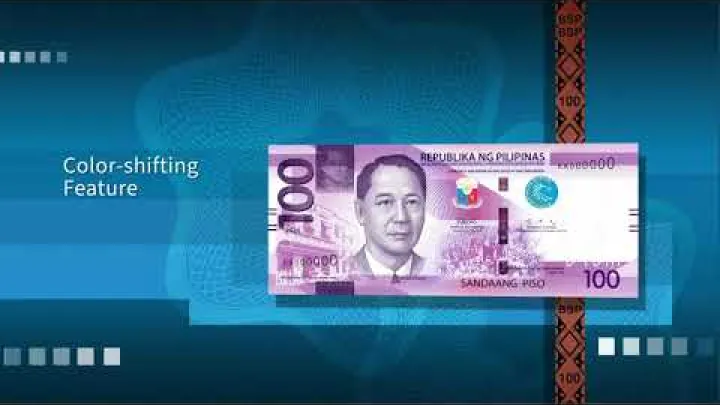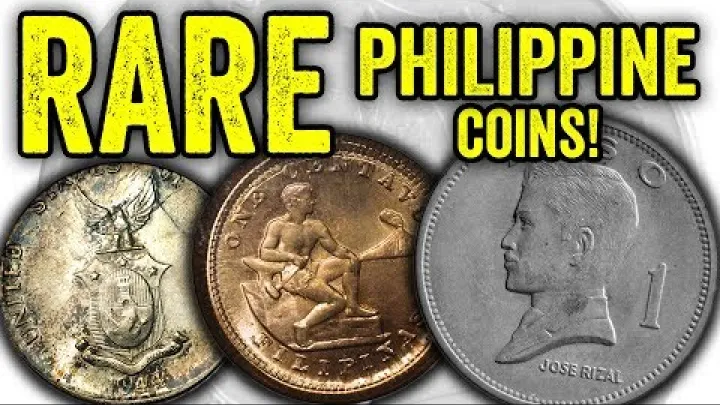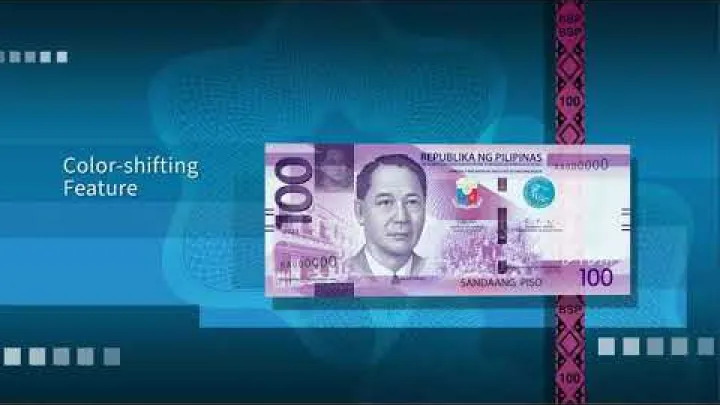Unlocking the Intricacies: Unveiling the Rich History and Design of the Philippine Currency
Step into the fascinating world of the Philippine currency, where history, art, and national identity converge. From the colorful banknotes that fill our wallets to the shimmering metallic coins we use daily, the Philippine currency is more than just a means of exchange – it's a reflection of the nation's rich heritage and diverse culture.
Unveiling the intriguing intricacies of the Philippine currency, this article takes you on a journey through time, exploring the evolution of design and the stories behind each denomination. Discover the iconic landmarks, national heroes, and indigenous flora and fauna immortalized on the banknotes, and delve into the symbolism and significance that lies within each carefully crafted detail.
Join us as we delve into how the evolution of the Philippine currency parallels the nation's history, from its colonial past to independence and beyond. Gain a deeper understanding of the role money plays in shaping our collective memory and sense of national pride. Whether you're a history enthusiast, a numismatist, or simply curious about the stories our currency tells, this article is sure to captivate and enlighten you.
Unlocking the intricacies of the Philippine currency is like peering into a time capsule, witnessing the nation's journey unfold before your eyes. Let's embark on this illuminating exploration together.
The Significance of Philippine Currency Symbols and Motifs
Symbols and motifs play a crucial role in the design of the Philippine currency, as they carry deep cultural and historical significance. Each denomination of the Philippine banknotes is adorned with symbols and motifs that represent the nation's identity, history, and values.
One of the most prominent symbols on the Philippine banknotes is the Philippine coat of arms. The coat of arms features a shield with eight rays of the sun, representing the eight provinces that first revolted against Spanish colonization. The coat of arms also includes a golden eagle, which symbolizes the country's aspiration for freedom and independence.
Another significant symbol found on the Philippine banknotes is the national flag. The flag features a white equilateral triangle symbolizing equality, with three stars representing the three main geographical regions of the Philippines: Luzon, Visayas, and Mindanao. The flag is a powerful symbol of unity and national pride.
In addition to symbols, the banknotes also feature motifs that highlight the country's rich cultural heritage. The banknotes showcase iconic landmarks, such as the Banaue Rice Terraces and the Mayon Volcano, which symbolize the natural beauty and diversity of the Philippines. Indigenous flora and fauna, such as the tarsier and the waling-waling orchid, are also depicted, emphasizing the country's unique biodiversity.
The symbols and motifs on the Philippine banknotes serve as a visual representation of the nation's identity and values. They remind Filipinos of their rich history, cultural heritage, and the struggles they have overcome. The inclusion of these symbols and motifs not only adds artistic beauty to the currency but also fosters a sense of national pride and unity among the Filipino people.
Notable Historical Figures Featured on Philippine Banknotes
The faces of notable historical figures grace the Philippine banknotes, immortalizing their contributions to the nation's history and culture. These figures represent different eras and aspects of Philippine history, showcasing the diversity and resilience of the Filipino people.
One of the most iconic figures featured on the Philippine banknotes is Jose Rizal, the national hero of the Philippines. Rizal's face adorns the ₱1,000 bill, reflecting his pivotal role in the country's struggle for independence during the Spanish colonial period. Rizal was not only a writer and a doctor but also a patriot who fought for social reforms and national identity.
Another prominent figure on the Philippine banknotes is Apolinario Mabini, who appears on the ₱500 bill. Mabini was a statesman and intellectual who played a crucial role in the Philippine Revolution against Spanish rule. Despite being paralyzed from the waist down, Mabini continued to fight for the country's independence and contributed significantly to the drafting of the Malolos Constitution.
Andres Bonifacio, the founder of the Katipunan and a key figure in the Philippine Revolution, graces the ₱100 bill. Bonifacio's face represents the spirit of the revolutionaries who fought for the country's freedom from Spanish colonization. His leadership and dedication to the cause continue to inspire Filipinos to this day.
In addition to these figures, the Philippine banknotes also feature other notable individuals such as Emilio Aguinaldo, the first president of the Philippines, and Corazon Aquino, the first female president of the country. Each of these figures played a significant role in shaping the nation's history and embody the values and aspirations of the Filipino people.
The inclusion of these historical figures on the Philippine banknotes serves as a reminder of the sacrifices and contributions made by individuals in the pursuit of freedom and nationhood. Their faces not only add depth and character to the currency but also serve as a constant source of inspiration and pride for the Filipino people.
Security Features of Philippine Banknotes
Ensuring the security and integrity of the Philippine currency is a top priority for the Bangko Sentral ng Pilipinas (BSP). To combat counterfeiting and protect the value of the currency, the BSP has implemented a range of security features on Philippine banknotes.
One of the most prominent security features is the hologram. Holograms are used on the banknotes to deter counterfeiters and make it easier for people to authenticate the currency. The hologram features a three-dimensional image that appears to change when the banknote is tilted, making it difficult to replicate.
Another important security feature is the security thread. The security thread is a thin strip embedded in the banknote paper and contains a series of microprinted characters and patterns. When held up to the light, the security thread becomes visible, indicating that the banknote is genuine.
Watermarks are also used as security features on Philippine banknotes. Watermarks are images or patterns that are created by varying the thickness of the banknote paper. These images can only be seen when the banknote is held up to the light, providing an additional layer of security against counterfeiting.
In recent years, the BSP has also introduced additional security features on the banknotes, such as the Optically Variable Device (OVD). The OVD is a reflective device that changes color when the banknote is tilted, making it difficult to replicate. The OVD also includes microprinted details that are visible under magnification, ensuring the authenticity of the banknote.
These security features, along with others not mentioned, are continuously upgraded and improved to stay ahead of counterfeiters. The BSP invests significant resources in research and development to ensure that Philippine banknotes remain secure and trustworthy.
The implementation of these security features on Philippine banknotes not only protects the value of the currency but also safeguards the trust and confidence of the Filipino people. By ensuring the integrity of the currency, the BSP plays a vital role in maintaining the stability and credibility of the Philippine economy.
Rare and Collectible Philippine Coins and Banknotes
The world of Philippine numismatics is a treasure trove of rare and collectible coins and banknotes that tell the story of the country's rich history and cultural heritage. These rare and collectible pieces not only hold significant historical and monetary value but also serve as tangible reminders of the past.
One of the most sought-after collectible coins is the 1906-S peso, also known as the "Sovereign" peso. This coin was minted during the American colonial period and is highly valued for its rarity and historical significance. The 1906-S peso features the profile of Liberty and an eagle on the reverse, symbolizing the American influence on the country at that time.
Another notable collectible coin is the 1944 "Pilipino Series" peso, which was minted during World War II. These coins were made from melted-down Spanish-Filipino coins and bear the inscription "Victory" to commemorate the Allied victory over the Japanese forces. Due to their scarcity and historical importance, these coins are highly prized by collectors.
In addition to coins, rare and collectible banknotes also hold a special place in the world of numismatics. One such banknote is the "Emergency Circulating Notes" issued during the Japanese occupation in World War II. These banknotes were printed using low-quality materials and bear the inscription "The Japanese Government" in Japanese characters. Due to their limited production and historical significance, these banknotes are highly sought after by collectors.
Other rare and collectible banknotes include the "MISPRINT" banknotes, which feature printing errors that make them unique and valuable. These misprinted banknotes may have inverted designs, missing serial numbers, or other printing irregularities. Collectors are drawn to these banknotes because of their rarity and the distinctiveness they offer.
The world of rare and collectible Philippine coins and banknotes is a fascinating one, offering a glimpse into the country's history and cultural heritage. These numismatic treasures not only serve as valuable investments but also as tangible reminders of the events and people that have shaped the nation.
The Role of the Bangko Sentral ng Pilipinas (BSP) in Currency Design and Production
The Bangko Sentral ng Pilipinas (BSP) plays a crucial role in the design and production of the Philippine currency. As the central bank of the Philippines, the BSP is responsible for ensuring the stability and integrity of the currency and the overall soundness of the country's monetary system.
The BSP's role in currency design begins with the selection of themes and designs for the banknotes and coins. The BSP's Currency Management Sub-Sector, together with a committee of experts, determines the themes and motifs that best represent the country's history, culture, and national identity. These themes and motifs are then translated into artistic designs that are used on the banknotes and coins.
Once the designs are finalized, the BSP's Security Plant Complex takes over the production of the banknotes and coins. The Security Plant Complex is responsible for printing the banknotes and minting the coins, ensuring that they meet the highest standards of quality and security. The complex utilizes state-of-the-art printing and minting technologies to produce banknotes and coins that are durable, secure, and visually appealing.
The BSP also plays a crucial role in the distribution and circulation of the Philippine currency. The BSP manages the supply of banknotes and coins, ensuring that there is an adequate amount of currency in circulation to meet the demands of the economy. The BSP also monitors and regulates the activities of commercial banks and other financial institutions to maintain the stability of the currency and prevent counterfeiting.
In addition to its responsibilities in currency design and production, the BSP also conducts public awareness and education campaigns to promote the proper handling and use of the Philippine currency. These campaigns aim to educate the public about the security features of the banknotes and coins, as well as the importance of detecting and reporting counterfeit currency.
The role of the BSP in currency design and production is crucial to the stability and integrity of the Philippine currency. Through its meticulous design processes, state-of-the-art production facilities, and comprehensive oversight, the BSP ensures that the Philippine currency remains secure, trustworthy, and reflective of the nation's rich history and cultural heritage.
The Impact of Technology on Philippine Currency Design
Technology has had a profound impact on the design of the Philippine currency, revolutionizing the way banknotes and coins are produced and protected against counterfeiting. From the use of advanced printing techniques to the incorporation of security features, technology has played a vital role in enhancing the security and aesthetic appeal of the Philippine currency.
One of the significant advancements in currency design is the use of intaglio printing. Intaglio printing involves the engraving of the design onto a metal plate, which is then inked and pressed onto the banknote paper. This printing technique produces raised ink that can be felt when the banknote is touched, making it difficult to counterfeit. The use of intaglio printing has significantly enhanced the security of Philippine banknotes and made them more resistant to forgery.
Another technological advancement in currency design is the incorporation of holograms. Holograms are three-dimensional images that appear to change when the banknote is tilted, making them difficult to replicate. Holograms are used on Philippine banknotes to deter counterfeiters and provide an additional layer of security. They also add a visual element of interest and sophistication to the banknotes.
The use of microprinting is another technological innovation in currency design. Microprinting involves the printing of tiny characters and patterns that are not visible to the naked eye. These microprinted details can only be seen under magnification, making it difficult for counterfeiters to replicate. Microprinting is used on Philippine banknotes to enhance security and prevent counterfeiting.
The impact of technology on Philippine currency design is not limited to banknotes. Technology has also revolutionized the production of coins through the use of modern minting techniques. Coin production now involves the use of computer-controlled machines that can mint coins with precision and consistency. These machines ensure that the coins meet the highest standards of quality and accuracy.
In recent years, technology has also enabled the BSP to introduce new security features on Philippine banknotes, such as the Optically Variable Device (OVD). The OVD is a reflective device that changes color when the banknote is tilted, making it difficult to replicate. The incorporation of such advanced security features has significantly enhanced the security of the Philippine currency and made it more resilient to counterfeiting.
The impact of technology on Philippine currency design is evident in the enhanced security features, improved printing techniques, and advanced minting processes. These technological advancements have not only made the currency more secure but also more visually appealing. As technology continues to evolve, the BSP will undoubtedly explore new ways to enhance the security and design of the Philippine currency.
Cultural and Historical References in Philippine Currency Design
The design of the Philippine currency is rich in cultural and historical references, reflecting the nation's diverse heritage and significant events in its history. These references serve to promote a sense of national pride and unity among Filipinos and remind them of their shared cultural and historical roots.
One of the most prominent cultural references in the Philippine currency is the depiction of iconic landmarks. The banknotes feature landmarks such as the Banaue Rice Terraces, which represent the ingenuity and agricultural heritage of the Filipino people. The Mayon Volcano, with its perfect cone shape, symbolizes the natural beauty and resilience of the country.
The banknotes also pay homage to indigenous flora and fauna, showcasing the country's unique biodiversity. The tarsier, a small primate endemic to the Philippines, is featured on the ₱500 bill, highlighting the importance of conservation and the protection of endangered species. The waling-waling orchid, known for its vibrant colors and beauty, represents the richness and diversity of Philippine flora.
In addition to cultural references, the Philippine currency also commemorates significant historical events and figures. The ₱1,000 bill features the face of Jose Rizal, the national hero, who played a pivotal role in the country's struggle for independence. The inclusion of Rizal's face serves as a constant reminder of the sacrifices made by individuals in the pursuit of freedom and nationhood.
The Philippine currency also celebrates important milestones in the nation's history, such as the 100th anniversary of Philippine independence. The ₱200 bill, which was introduced in 2020, features the BSP's logo and the Tubbataha Reefs Natural Park, a UNESCO World Heritage Site. This banknote pays tribute to the country's commitment to environmental conservation and the preservation of its natural treasures.
The cultural and historical references in the Philippine currency serve to foster a sense of national pride, unity, and identity among Filipinos. They remind individuals of their shared cultural heritage, the struggles they have overcome, and the achievements they have made as a nation. The inclusion of these references not only adds depth and meaning to the currency but also serves as a constant source of inspiration and reflection for the Filipino people.
Conclusion: Appreciating the Beauty and History of Philippine Currency
As we conclude our journey into the intricacies of the Philippine currency, we are left with a deep appreciation for its beauty, history, and cultural significance. The Philippine currency is more than just a means of exchange; it is a reflection of the nation's rich heritage and diverse culture.
The evolution of Philippine currency design tells the story of the nation's journey towards independence and its resilience in the face of colonization and adversity. Each denomination of the Philippine banknotes carries symbols and motifs that represent the country's history, culture, and values. From the iconic landmarks and national heroes to the indigenous flora and fauna, the banknotes serve as tangible reminders of the past and sources of national pride.
The security features of the Philippine banknotes, enabled by advancements in technology, protect the value and integrity of the currency. These features deter counterfeiters and provide reassurance to the Filipino people that their currency is secure and trustworthy.
The rare and collectible Philippine coins and banknotes add another layer of depth and fascination to the world of numismatics. These treasures not only hold historical and monetary value but also serve as tangible connections to the past and sources of inspiration for collectors and enthusiasts.
The role of the Bangko Sentral ng Pilipinas in currency design and production cannot be overstated. The BSP's meticulous design processes, state-of-the-art production facilities, and comprehensive oversight ensure that the Philippine currency remains secure, trustworthy, and reflective of the nation's rich history and cultural heritage.
In conclusion, the Philippine currency is a testament to the nation's identity, history, and cultural diversity. It is a tangible representation of the Filipino people's resilience, unity, and aspirations. As we go about our daily lives, let us take a moment to appreciate the beauty and history that lies within the Philippine currency, for it is an embodiment of our collective memory and national pride.
Unlocking the intricacies of the Philippine currency is like peering into a time capsule, witnessing the nation's journey unfold before our eyes. Let us cherish and preserve this treasure, for it tells the story of a nation's past and inspires the future.
Your Nearby Location
Your Favorite
Post content
All posting is Free of charge and registration is Not required.











